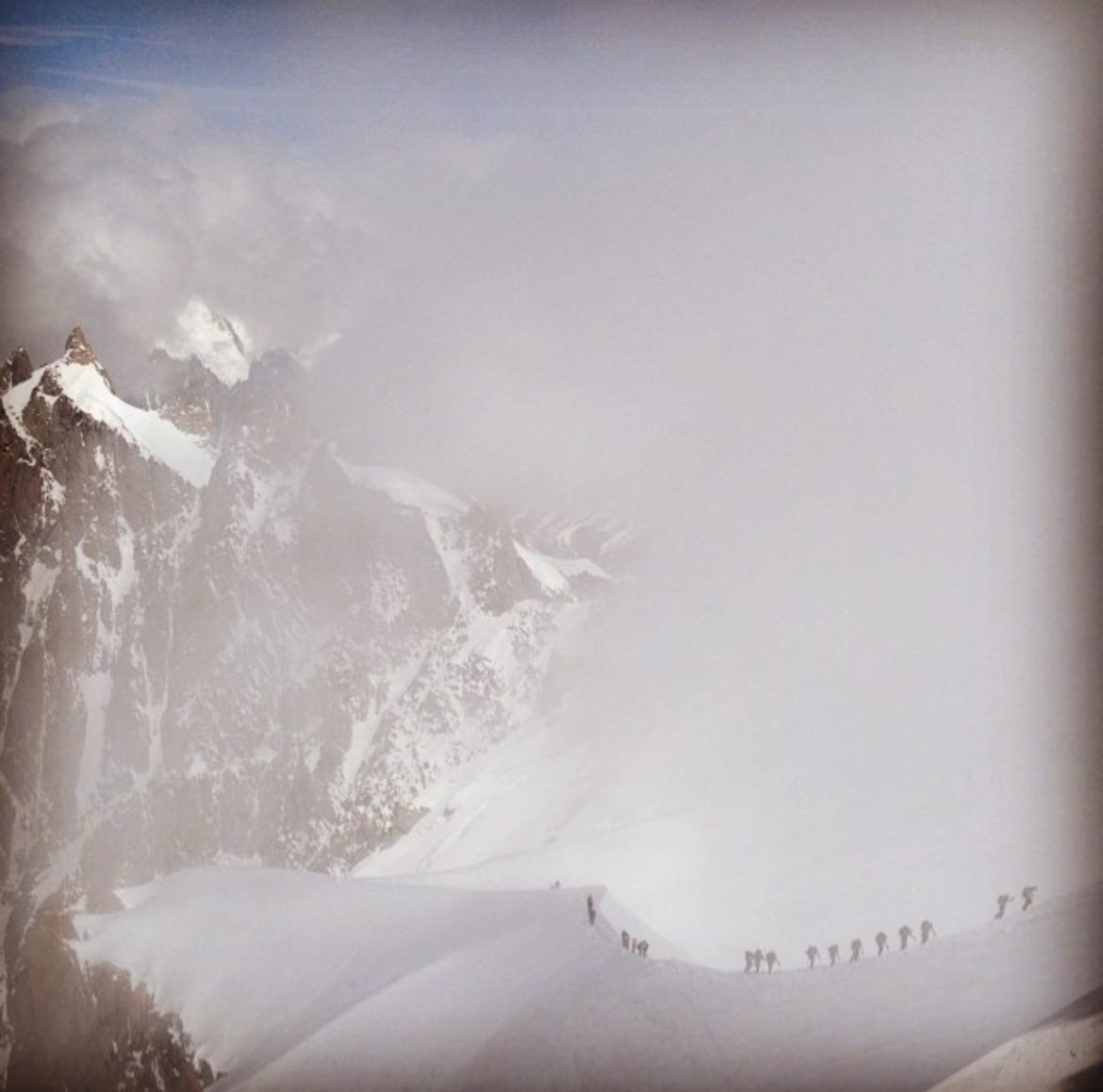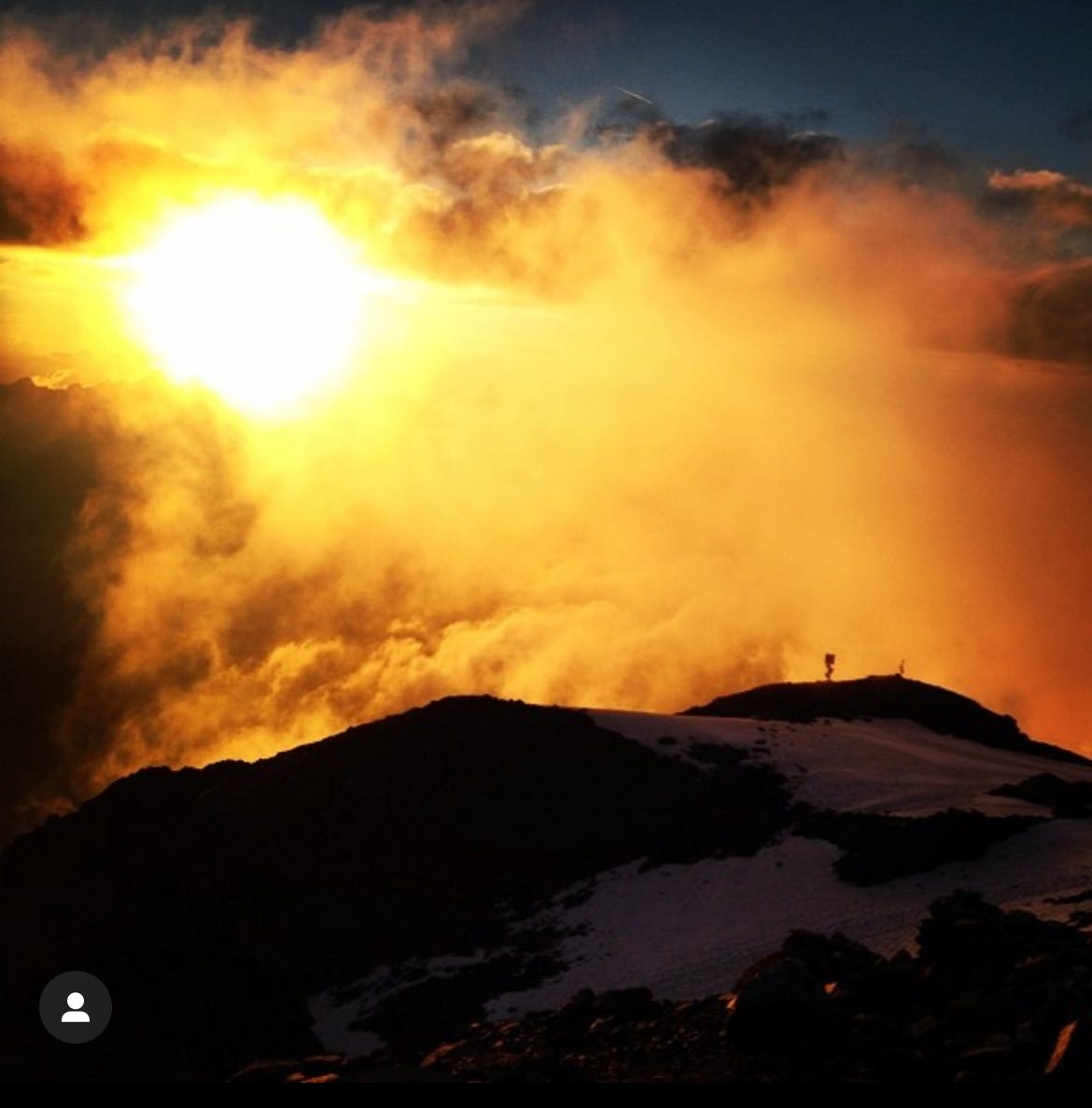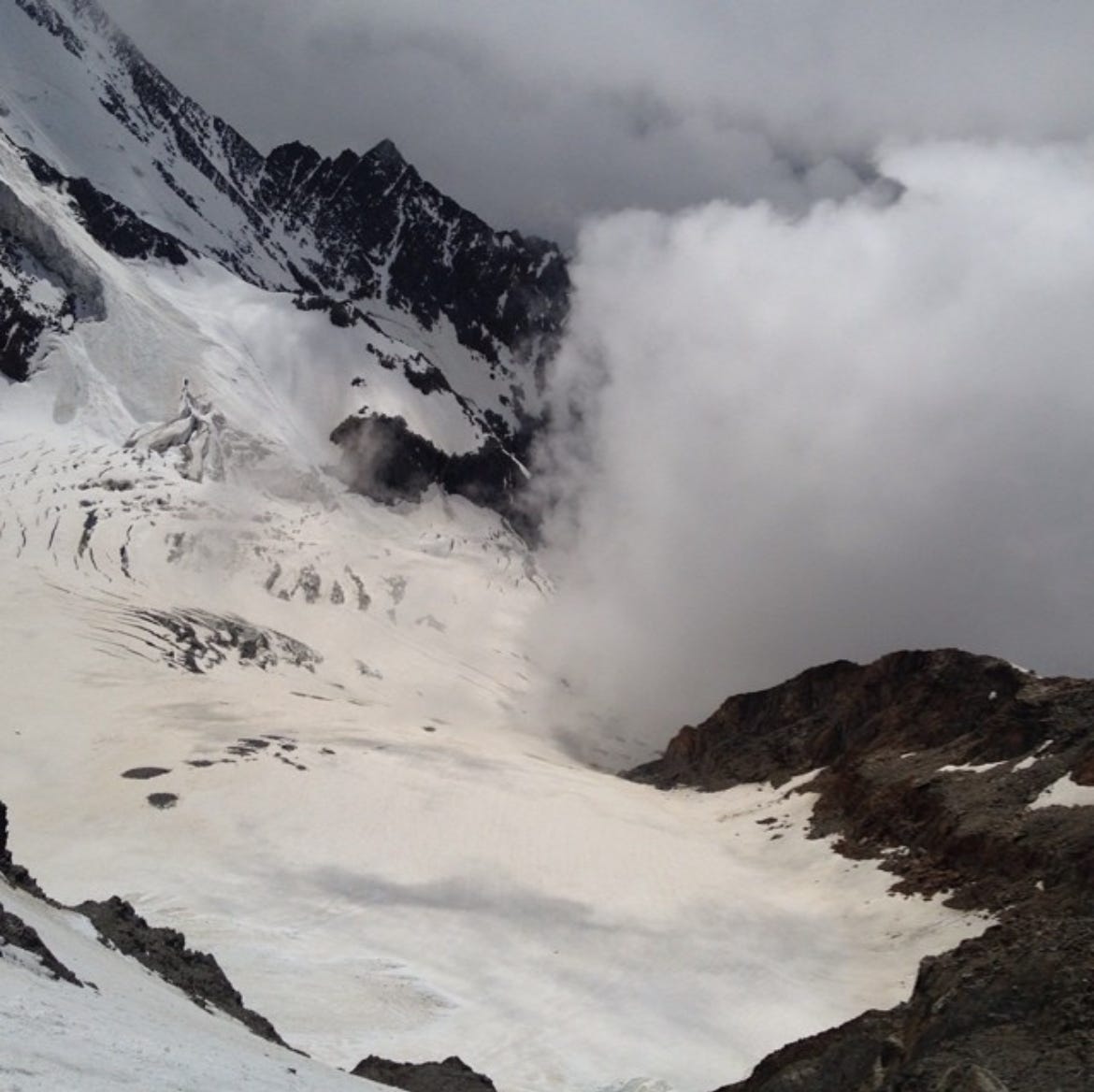Sometimes failing is actually winning.
Hear me out.
I try to cultivate the will to do “hard things”. It is a character trait I work to develop, in myself, in my parenting, in my choice to homeschool, in my permaculture garden, and in my career at large.
My “hardest thing” is silencing that inner voice that tells me I’m not good enough.
I have failed a lot in my life. I have probably failed more than I have succeeded. I think it’s important to talk about failures, not as a way to condemn or berate yourself, but as a vehicle for change and growth. I find it helpful when I read that others fail, too.
Most of my failures are due to my own character flaws or inexperience, but few are as spectacularly life-altering as the time I tried and failed to climb Mont Blanc.
Mont Blanc is the highest mountain in Western Europe, clocking in at nearly 16,000 ft. It is so dizzyingly high, it creates its own weather patterns. Freak thunderstorms, snow and hail are to be expected. Avalanches are common. The historical and challenging ascent rout requires one to cross the Grand Couloir. Darkly coined “the corridor of death”, this gully is composed of exposed rock, ice and snow. Crumbly, jagged grey rocks can come loose and fall, striking and killing adventurous hikers.
It was first ascended in 1786 by Michel-Gabriel Paccard and Jacques Balmat. This ascent marks the beginning of the mountaineering movement as we know it. Today, Mont Blanc holds the highest fatality rate of any mountain in Europe.
Why is climbing Mont Blanc so dangerous? There are many reasons, but the biggest is that people with no mountaineering experience think they can climb it.
I arrived in Chamonix in the summer of 2014. Chamonix is the birth place of mountaineering and “extreme skiing”. The adorable cobble streets are lined with expensive gear shops, ski shops and french patisseries.
I was there on a gig. I had been hired by an “adrenaline junkie” Dad to produce and film the first ascent of his two children, ages 9 and 11. If they succeeded, they would be the youngest humans ever to survive “the corridor of death” and reach the summit.
It would be a World Record.
I was staying in this family’s chateau, filming interviews in picturesque settings, all while Mont Blanc loomed bigger and bigger in my mind. I kept trying to prepare myself mentally. I wasn’t a total lunatic: I had hiked Mount Sinakara in 2012 to film the largest indigenous festival in the Andes. We didn’t summit but we were really high up there, at least 15,000 ft. However, I had had two weeks to acclimatize to the altitude in Cusco, and there were no technical climbing skills required.
In the hiring interview, I told the Adrenaline Junkie Dad that I didn’t have crampon or ice axe experience, and he’d totally sloughed it off. “It’s a long walk. I’ll teach you when you get here!” he replied, with total confidence.
His confidence gave me confidence, even when friends told me I was crazy. He bought me the ticket to Chamonix, and I started training.
I trained for several weeks leading up to the climb, but running along the Lakeshore in Toronto is very different than training at high altitude. Chamonix sits at an elevation of 3,396 ft above sea level. For comparison, Toronto sits at 251 ft.
The other concern was the weird weather.
Even in 2014, climate change was causing massive changes to the mountain. In the 1800s, travel writers described how the Mer de Glace, the longest glacier in France, could be seen from Chamonix, almost spilling like a tongue down into the cobbled streets. When I arrived, it had receded over 2 kilometres, leaving a slippery pile of slushy rock and debris in its wake.
The plan was to take a teleferique (gondola) up the back of the mountain, covering the first 9,000 ft or so, and then begin our “long walk” to the first refuge, the Tete Rousse Hut. Basically, it was a long house with communal beds. The hardest part would be the following day, when we had to cross a steep ascent of a rock face that stretched a couple thousand feet above the refuge. It was like a vertical wall of slippery, grey rock.
The night before we began our quest, I hadn’t been able to sleep or pack properly because we’d had an audio issue with one of our cameras. I was up all night trying to figure out how to fix it. I hadn’t scheduled enough time for interviews or B-Roll, and so I had been running around trying to shoot everything in the days before, and it was all feeling very haphazard. We just hadn’t given ourselves enough time, to shoot, to train, to acclimatize to the altitude, and we were experiencing numerous tech issues. The morning of our departure, the other camera guy arrived from his hotel, bleary-eyed and fatigued, and told me he didn’t feel well enough to do the climb. He flat out refused. I was going to have to go on my own.
Gulp. I wasn’t packed properly, we needed to leave NOW and I still had had no time to receive training with crampons or ice axes.
We did have a hired guide - but truthfully, he hated me from the start. He could tell I was out of my league. My inexperience was painfully obvious and I was flailing. Juggling filming while trying to manage my fear of the climb had me over-reactive, white faced and teary. I was frozen in a state of fear. I wasn’t communicating what I was feeling — I wasn’t even able to articulate what I was feeling. I just kept crying…and filming.
By the time we arrived at the Tete Rousse Hut, I was a complete mess. I was terrified, unprepared, and struggling hard with the altitude. The thing is, it had cost a lot of money to fly me there; I was getting paid to be there, and I didn’t feel like I could say no, I’m not doing this. The other thing was — there were these two kids watching my every move. Having grown up in Chamonix, they were used to the casual approach to death that seemed to permeate adventure culture on Mont Blanc. Certainly, it seemed to be the culture of their home. I couldn’t help but feel awful for these children, for their father who seemed fame hungry and thirsting for risk, who was putting them in a very dangerous situation. They were strong enough, surely, to make it to the summit, but I was struggling with the ethics of it. Sure they could do it — but should they?
The next morning we were delayed because the weather was warm and wet. The snow was soft, not ideal climbing situations, but Adrenaline Junkie Dad wouldn’t hear of it. The guide wouldn’t hear of it. They wanted to push on.
I distinctly remember calling my mother from the Tete Rousse Hut, looking over my shoulder at the table of mountaineering men all staring broodily at me, whispering in hushed tones, trying to hide my tears, “The conditions are bad but they want to push on — and I haven’t had any training at all! This wall looks insane…I don’t know what to do…” She started crying, which made me cry more, and I huddled with my back to the table, shivering with fear. Nobody on the team talked to me after that.
Later that day, Adrenaline Junkie Dad and guide agreed if it was going to happen, it was now or never. We walked up to the vertical ascent, hooked in our ropes and started climbing. I just kept staring at the rock in front of me. After some time, we got to our first technical pass. We had to walk across a swath of deep snow to get to the other side where the route picked back up. (I’m sure there’s a technical term for this and I have no idea what it is.)
The guide walked across this corridor first, secured by a rope from one side to the other. The father walked across with his children tethered to him, leading them on. I would be last to cross, so I could film the children crossing.
The family got to the middle of the crossing when suddenly the sound of hissing enveloped us. The entire pass turned into a river of white and a mini-avalanche swept the children halfway down the pass.
Absolute chaos ensued.
Adrenaline Junkie Dad was screaming. The guide was screaming. The children were still tied to the rope, but they’d been swept very, very far down. We could see their little heads bobbing in the sea of snow.
I felt like I was going to vomit all over the mountain side. The guide quickly descended down the sharp rock cut, tied himself to a rock and waded into the snow to retrieve them. They were fine, totally unharmed, but that was it. The quest was over.
I couldn’t hide my joy at turning around despite our epic failure. We climbed back down and returned to the Tete Rousse Hut. I called my mom again, joyfully relaying the news that “The children were hit by an avalanche and I get to come home!”
When we checked the cameras, the footage was crap. I was shaking so bad, you could hardly see what was going on. The father still released it on youtube. It made a huge splash in American news and he was interviewed on US Breakfast Television. He got what he wanted, his 15 minutes of fame.
I read an article later in the Guardian that locals were condemning his dangerous stunt, calling it reckless and stupid. They were not to be invited back.
The close brush with death changed me. I can see how people get addicted to extreme sports. Everything else afterwards feels less hard. I didn’t sweat the small stuff for a long time following this experience. So, sometimes, failure can be success.
The great adventure writer
detailed her experience of turning around at the Tete Rousse Hut in this article for The Atlantic, where she describes a conversation with an experienced guide after deciding not to attempt the summit."You have no business on this mountain unless you have at least six alpine peaks under your belt," he said. That's why we have so many people killed here." He gestured to the rock face I'd decided not to climb. "We lost three people off that face a couple of weeks ago," he said. "Two novices and a guide. One novice lost his footing and fell, pulling the second guy off, and the guide couldn't hold both of them. So all three fell to their deaths."
Apparently the following year, the Adrenaline Junkie Dad successfully got his son to the top of the mountain. I have never worked with him again or heard from him since this disastrous experience, and I never want to. That’s taught me a lot, too. There were many times throughout this journey where I should have said no, but I didn’t feel like I could. I came home with a lot of shame around this experience, but looking back ten years later, I recognize this was a turning point in my life for which I’m very grateful.
This is one failure I choose to celebrate.









Oh Kate, your experience sound so harrowing; I’m so glad the universe intervened on everyone’s behalf. Fantastic description! Thank you